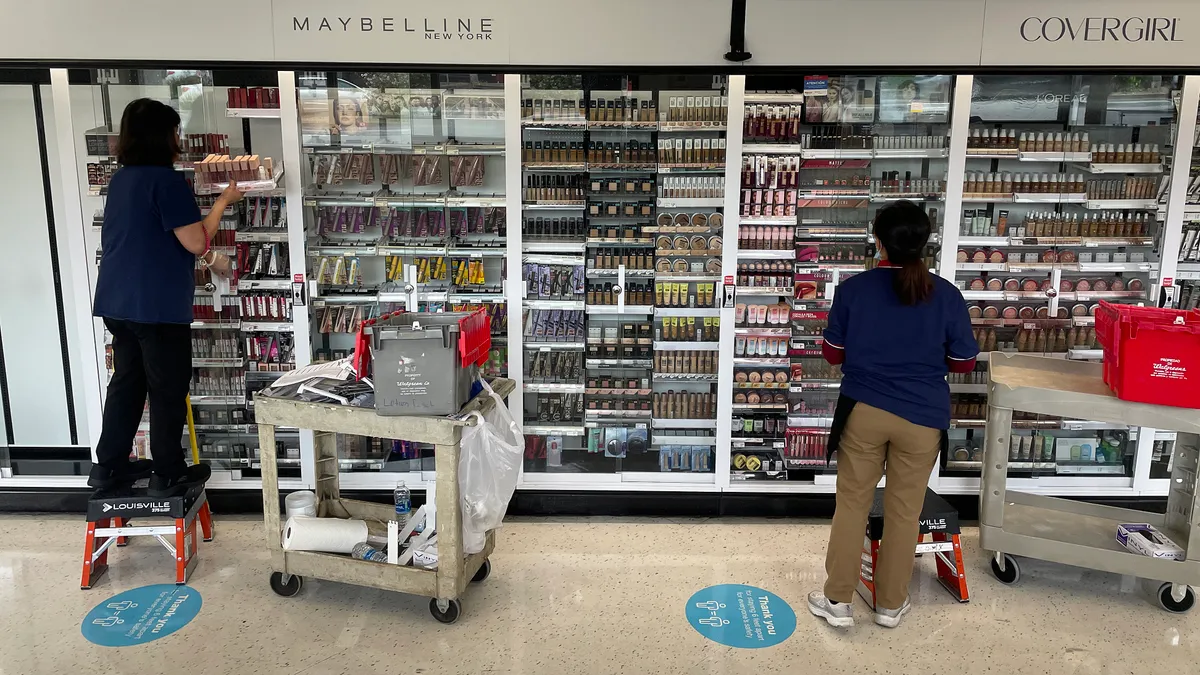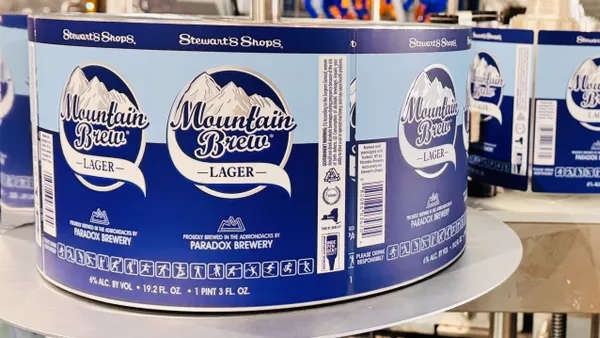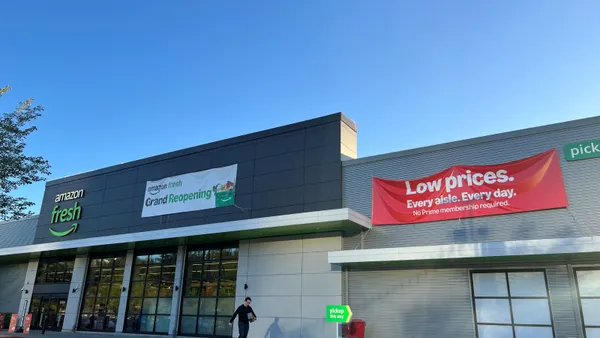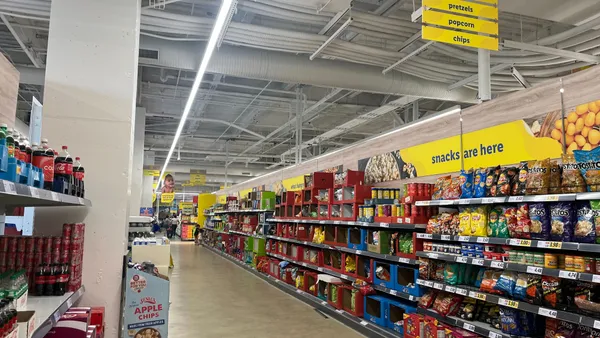Dive Brief:
- Shrink — which the National Retail Federation describes as inventory losses caused by theft, operational or process mistakes and systemic errors — rose to 1.6% in 2022 from 1.4% in 2021, according to the group’s annual retail security survey.
- Using revised estimates for total retail sales from the U.S. Department of Commerce, the group extrapolates that to $112.1 billion in losses, up from $93.9 billion last year. The government’s numbers are not adjusted for inflation. Retail sales in 2022 rose to $4.9 trillion from $4.6 trillion the previous year, according to the NRF.
- Grocery is one sector, along with pharmacy, department stores and mass merchandise, that has the greatest average shrink rates as food and beverage continue to be a top item targeted by organized retail crime groups, the report noted.
Dive Insight:
For a host of reasons, numbers on retail shrink and theft are slippery. While the NRF offers the best analysis available, its calculations and conclusions carry hefty caveats, according to Trevor Wagener, director of the research center and chief economist at the Computer & Communications Industry Association, who studies these issues.
“The NRF, I believe, provides the best data that we have in the industry, but it's recognized in the industry that there are data shortcomings here,” he said by phone.
On par with previous years, nearly two-thirds of retail shrink was due to theft, the NRF said. In 2022, external theft, including organized retail crime, caused an average 36% of total loss; employee theft 29%; and process, control failures and errors 27%, per the report. The rest was due to unknown reasons and “other.”
Inventory loss from theft and operational or other errors, known as "shrink," has fluctuated little in 7 years
For example, because the NRF multiplies its findings on average retail shrink with annual retail sales, both inflation and spending patterns related to the pandemic recovery account for much of the increase in shrink. Still, related costs, like cleanup or repair after theft or vandalism, aren’t accounted for, Wagener said by phone.
Also not calculated are investments in heightened security or the sheer anxiety of how to keep stores safe, he said. Earlier this year, for example, Target altered, moved or removed merchandise after people, objecting to its Pride displays, confronted store workers and damaged merchandise. This week the retailer said it would close nine stores due to safety concerns.
The NRF itself alluded to this in its survey, noting that respondents reported that shoplifters overall in 2022 were “somewhat more or much more aggressive and violent” compared to the year before. Those tracking the number of violent incidents said they increased by 35% on average, per the report. More than 65% said they are concerned about mass violence or shootings, up from 58% in 2021. Malls and stores are especially vulnerable to such attacks.
“While theft has an undeniable impact on retailer margins and profitability, retailers are highly concerned about the heightened levels of violence and threat of violence associated with theft and crime,” the group wrote. “Retailers’ top priority remains providing a safe workplace for associates and a safe shopping experience for customers.”
But it’s also difficult to know the true scope of the problem. The NRF, which has about 16,000 retailer members, based its 2022 calculations on survey answers from 177 retail brands, with some $1.6 trillion of annual retail sales and more than 97,000 retail locations in the U.S.
That’s nearly triple last year’s 63 respondents, but still a relatively small sample. That means that reports from individual respondents could skew the data, and the slightly larger sample size could actually exacerbate that depending on the makeup of the group, according to Wagener.
Several researchers rely on the NRF’s numbers, with some expressing skepticism. S&P Global Ratings this month said retail theft is “among the top risks to the sector.” But analysts led by Diya Iyer said they “believe some retail companies could be overstating the contribution of theft this year.”
“Instead, it could be their own poor merchandise execution or inventory management that is the issue,” Iyer said. “That said, we do believe these big picture, long-term concerns about theft are likely part of what are driving big market hits.”
The NRF noted that retailers identified Los Angeles; San Francisco and Oakland, California; Houston; New York City; Seattle; Atlanta; Sacramento, California; Chicago; Denver; Miami; and Albuquerque, New Mexico, as the 10 cities most affected by organized retail crime. But parsing crime reports involves another set of thorny statistical issues, Wagener said. The Federal Bureau of Investigation itself warns against comparing crime statistics among different jurisdictions.
Crafting effective responses to these issues requires better information, according to Wagener.
“Virtually all retailers agree that they would like to see better data collection to address many of the very same issues that we discussed, because in many cases, there are questions,” he said. “They know what's happening within their own stores. But they would like to know whether or not they are beating industry trends or are aligned with industry trends, and it's very difficult, with current data collection, to really say that with any confidence.”
















